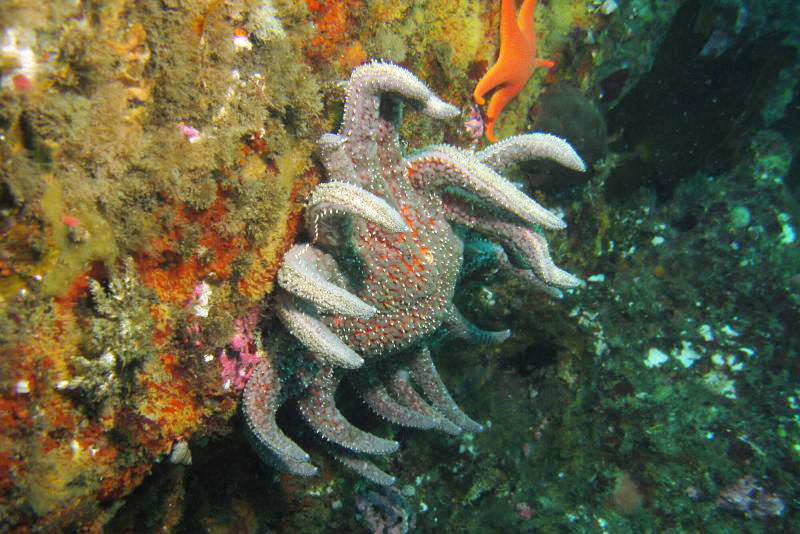
NOAA Fisheries officials on March 15 proposed listing the sunflower sea star, once common along the Pacific coast of North America, as threatened under the Endangered Species Act (ESA), due to its sharp decline and the threat of a lethal pathogen.
More than 90% of sunflower sea stars were killed from 2013 to 2017 by Sea Star Wasting Syndrome, in what was considered the largest marine wildlife disease outbreak on record. Sea stars that contract the syndrome become lethargic, develop lesions, lose their arms and within days disintegrate into gooey masses.
Sunflower sea stars are voracious predators that consume a wide variety of benthic species and can influence ecosystem structure by virtue of their predatory habits. They prey on sea urchins, which consume kelp and other marine vegetation that provide habitat for many nearshore species, sometimes during crucial stages of life.
Kelp forests also have disappeared from areas of California where the sunflower sea star has severely declined.
In its announcement of the proposed listing, NOAA Fisheries noted that while Sea Star Wasting Syndrome is not well understood, it appears to be exacerbated by rapid changes in water temperature, warmer ocean temperatures and other physical stressors. As the climate continues to warm, further outbreaks are likely to occur and be more widespread, the agency said.
These sea stars may reach up to one meter (3.28 feet) across from arm tip to arm tip, have up to 20 arms and range in color from orange to red to purple or beige. Before the 2013 outbreak of wasting syndrome, they were one of the most abundant, widespread and recognizable sea stars on the Pacific coast, from the Aleutian Islands in Alaska to Baja California, Mexico.
The Pacific coast has in recent decades experienced a series of marine heatwaves, including one between 2012 and 2016 in which a proportion of the global ocean saw strong or severe heatwaves that increased from 30% to 70%.
The eastern Pacific marine heatwave, which impacted waters from Alaska to California in 2014-2016, coincided with the 2013-2017 wasting syndrome outbreak and die-off.
A causal link has yet to be firmly established. Populations of sunflower sea stars appear relatively more viable in cooler and possibly deeper waters to the north, including the Salish Sea in the Pacific Northwest, plus British Columbia and Alaska.
Chris Yates, assistant regional administrator for protected resources in NOAA Fisheries’ West Coast Region, said the science indicates that warmer temperatures and other stressors fueling disease are pushing the species toward an elevated risk of extinction.
In August 2021, the Center for Biological Diversity submitted a petition to NOAA Fisheries asking that the sunflower sea start be listed under ESA. That December, NOAA Fisheries determined the petition provided substantial information suggesting that such a listing may be warranted.
Dayv Lowry, a fisheries biologist who led the status review of this species, described the sunflower sea star as an integral species that helps make the ecosystem what it is. “The proposed listing recognizes the grave threat the species currently faces,” Lowry said.
